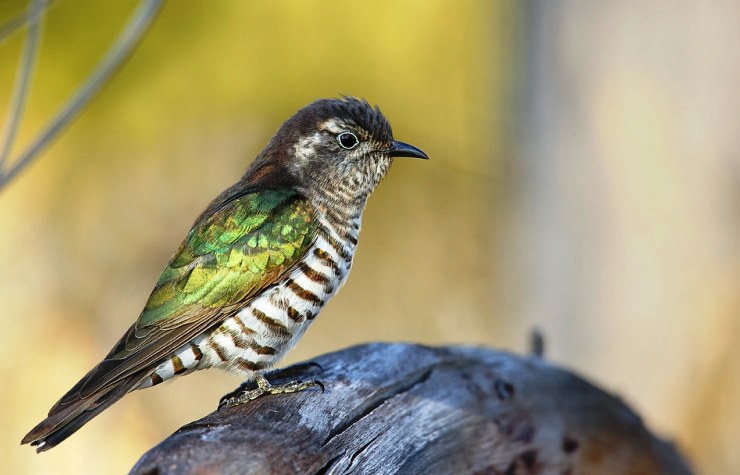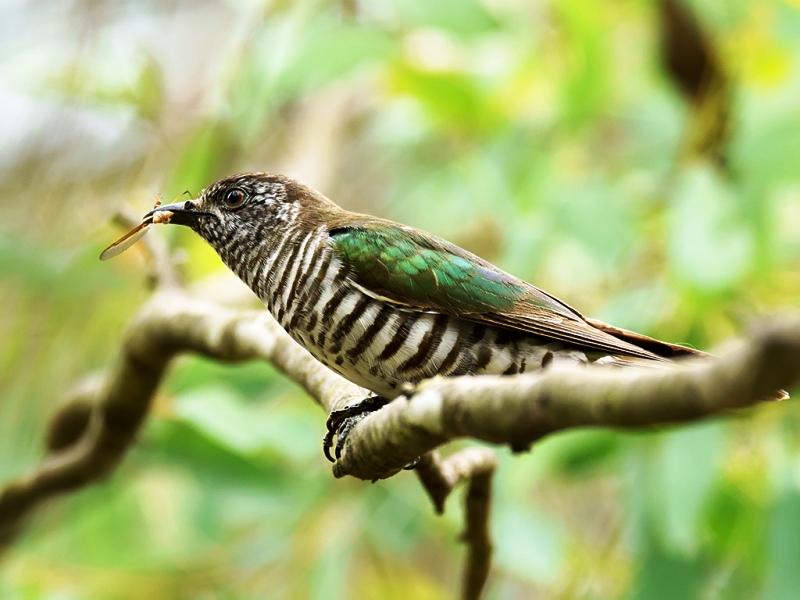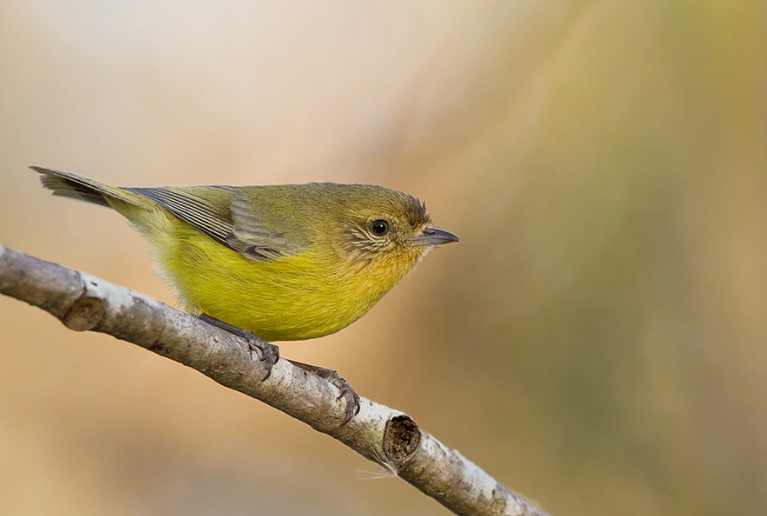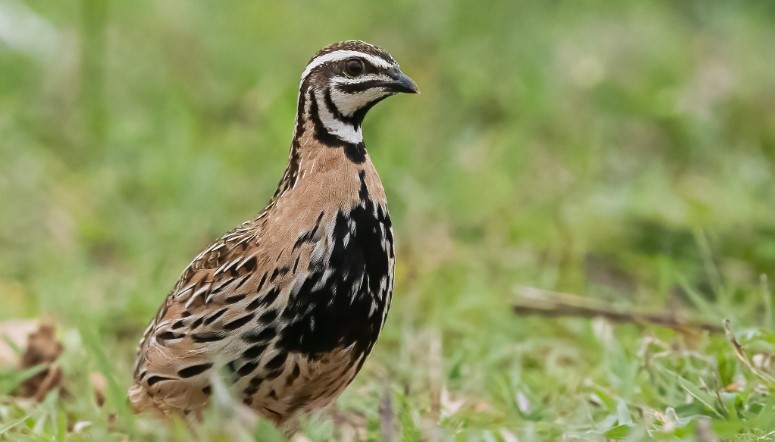The shining Bronze-cuckoo (Chrysococcyx lucidus) deposits its eggs in the nests of at least 65 other species of birds. It usually chooses the domed nests of thornbills, gerygones, fairy-wrens, and scrubwrens. But sometimes lays in the cup-shaped nests of Wee bills, flycatchers, chats, silvereyes, sitellas, and honeyeaters. A female may lay as many as 16 eggs in a season, depositing them singly in a host’s nest usually after the commencement of incubation.
Paradoxically, it is the newly hatched young of the Shining Bronze-Cuckoo, not its eggs, that mimic those of the host, perhaps because the cuckoo usually lays after the host has begun incubating and so, sometimes, nestlings of the two species share the nest briefly.
As with other cuckoos, fledglings are fed by their foster parents and sometimes other birds, even Shining Bronze Cuckoos themselves, for several weeks after leaving the nest. Rates of parasitism vary from year to year.

Up to 30 percent of local populations of Yellow-rumped Thornbills, a favored host may be parasitized in one season and only five percent the next. Caterpillars, spiny-haired moth larvae, and beetles form the bulk of the diet of the Shining Bronze-Cuckoo which also takes dipterans such as crane flies, plecopterans, and ants.
These it captures by perch-and-pounce sallying, sitting watchfully on bare vantage branches just under the forest canopy, then flying out to pick its prey from foliage, branches, or the ground, and returning to a perch to eat it. The spines from larvae become embedded in the lining of the gizzard and it is likely that they are disposed of by regurgitating the peeled-off lining. Bronze cuckoos eat a number of insects that are generally considered unpalatable to most birds.
Shining Bronze-Cuckoos is a species of cuckoo in the family Cuculidae. This species lives in the upper and mid strata of rainforests, dense eucalypt woodland, and forests that receive over 380 mm of rain annually.
They are commonly solitary and silent, males calling to advertise themselves and their territory only when breeding. Strong on the wing but feeble on the foot, they fly swiftly and gracefully, in long undulations on finely pointed wings, hopping from perch to perch.

Although occasional birds stay south year-round, Shining Bronze-Cuckoos are also migratory. The southwestern population travels to winter in the Sunda arc each autumn, returning in July and August, and the eastern Australian population shifts to New Guinea then, returning later, in August-September, to breed.
At times of migration, occasional stragglers of the broad-billed, green-crowned New Zealand race, which winters mainly from the Bismarck Archipelago to the Solomon’s, can move up and down the east coast. It is also known as Golden Bronze-Cuckoo, Greenback cuckoo, and Broad-billed Bronze-Cuckoo.
The size of Shining Bronze-Cuckoo is about 170-180 mm in length. The male has a crown and mantle of dull copper-bronze color contrasting with bright bronze-green back and wings; broad concealed whitish bar through the underwing. Outer tail feathers were banded black and white; the rest are dark bronze-green with a dark band near the tip. With a white line over the eye, indistinct.
The underside is white, with close, complete copper-bronze bars. There is no difference between the two races in terms of the color of the eyes, though the eye ring is pale gray with a black bill; about 4 to 5 mm wide in front of the nostril in the Australian race and wider in the New Zealand race. Feet are dark olive-grey.
The female is similar to the male but the changes between the mantle and back are not so clean-cut. Eyes are brown, becoming grey. Juveniles have dull brown-green mantles tinged with purple copper. Back, wings, and tail shiny bronze-green with bronze edges to feathers. No white line over the eye. Chin, throat, and breast are grey-white with faint bars; the belly is white barred brown on the flanks.
The call of Shining Bronze-Cuckoo is a short series of high-pitched, up-slurred whistles by an advertising male, like a person whistling a dog; often ends in a long descending note. The bird has been observed making staccato notes when displaying males.
The species is heard far more often than it is seen. It prefers to remain inconspicuous among the foliage in the canopy of trees, where it skulks about in search of caterpillars to eat.







